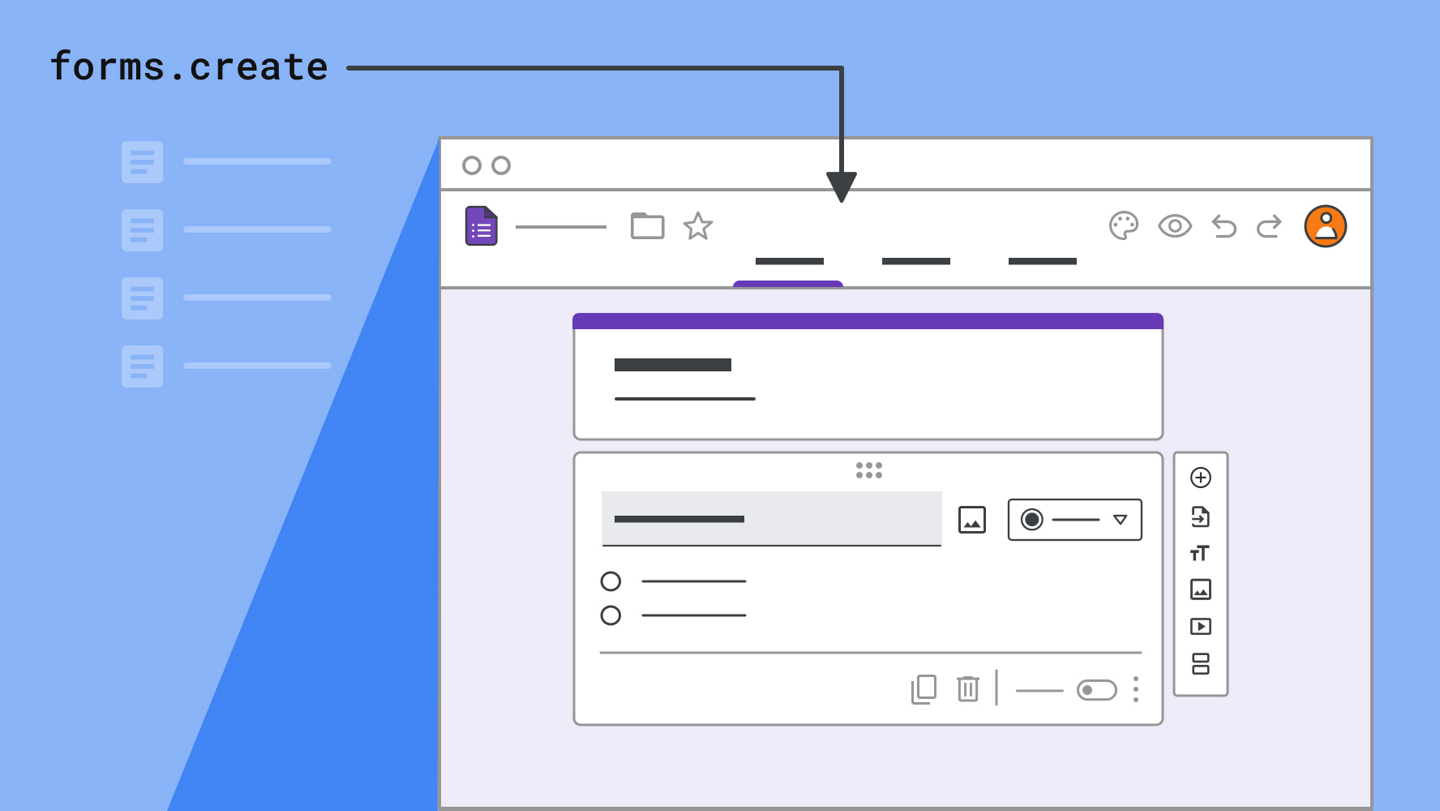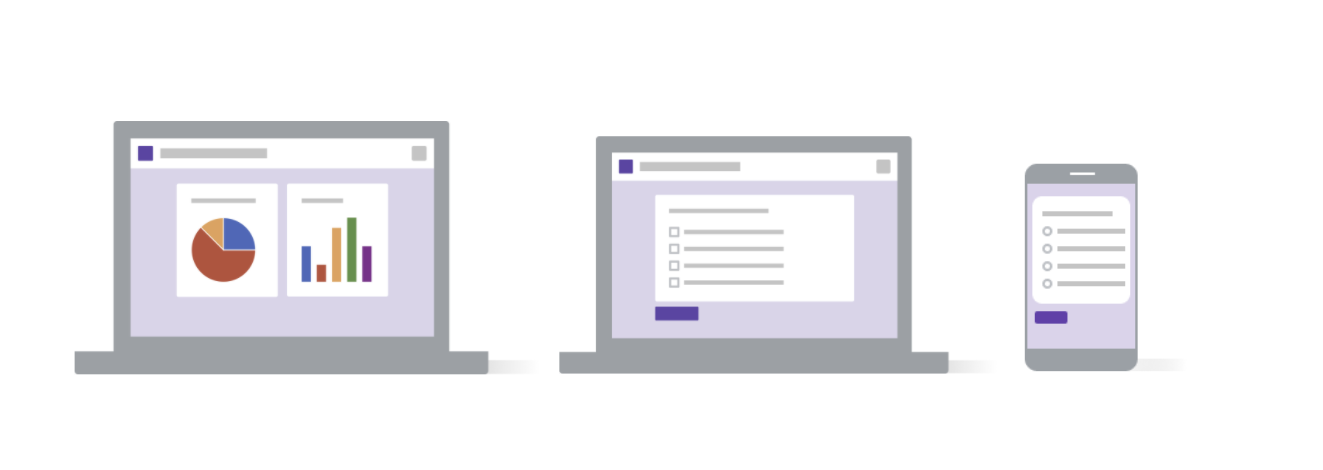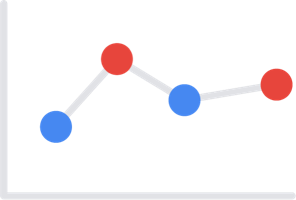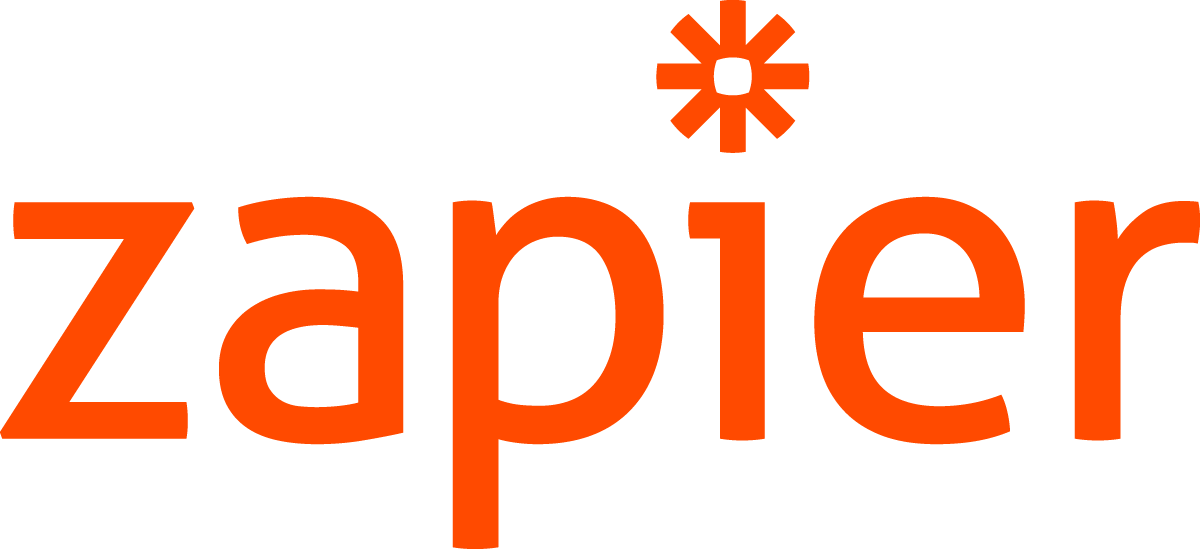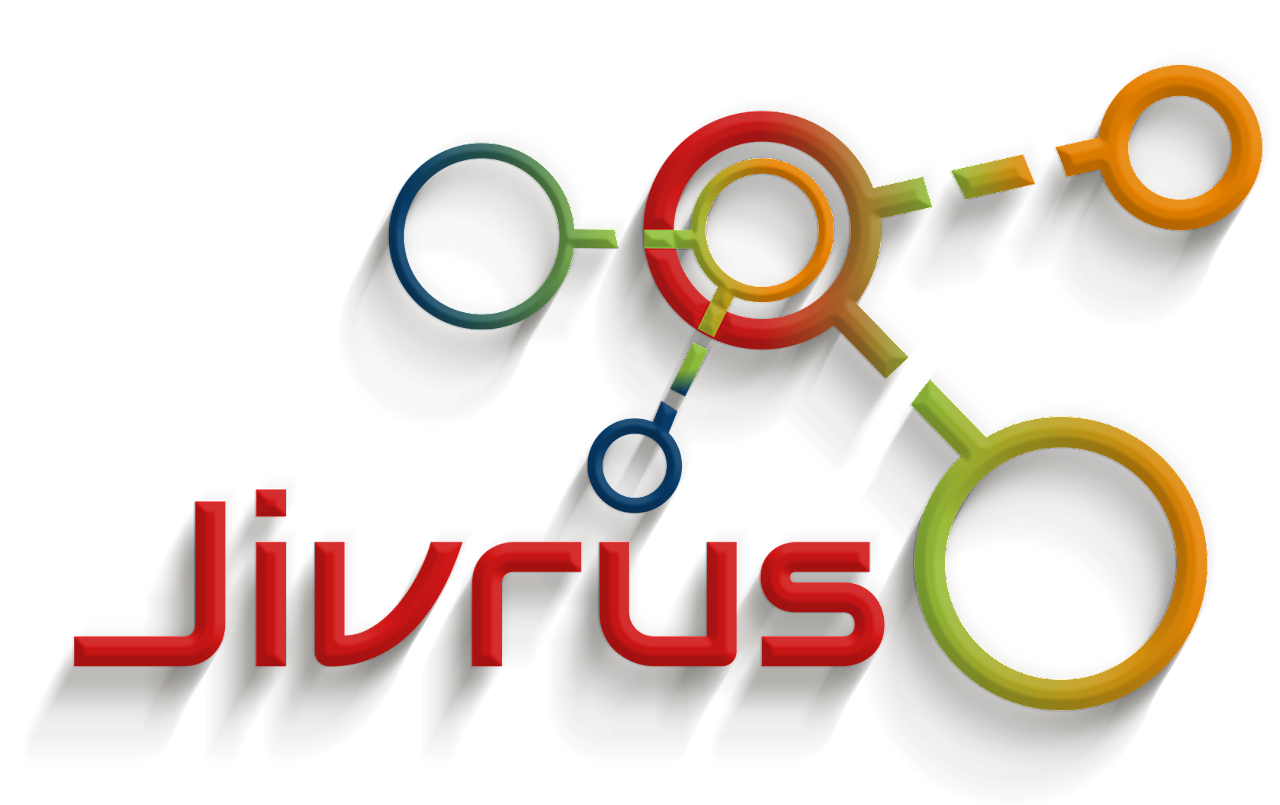Tag Archives: API
Create Spaces and Add Members with the Google Chat API, available in Developer Preview
What’s changing
Using the Google Chat API, you can now programmatically create new Spaces and add members to those Spaces. This functionality is available in preview – developers can apply for access through our Google Workspace Developer Preview Program.
Google Workspace administrators can also use the API controls in Admin Console if they would also like to restrict access to Google Chat data.
Who’s impacted
Admins and Developers
Why you’d use it
While it’s easy to create new Spaces and add members directly in Google Chat, there are cases where Spaces can be filled with many topics and side conversations, making it difficult to keep track of important information. Using the new API functionality, you can set up new spaces that focus on a specific topic, team, or project. For example, an on-call app can automatically create a space when an outage has been detected.
Getting started
- Developers: To use the Google Chat API, developers can apply for access through our Google Workspace Developer Preview Program.
Availability
- Available to all Google Workspace customers, as well as legacy G Suite Basic and Business customers
Resources
Source: Google Workspace Updates
Introducing the Google Forms API
Posted by Christian Schalk, Developer Advocate
Building on the power of Google Forms
For the first time, Google Forms has an API and we are going to show you how you can use it and what’s in it. The new Google Forms API joins the large family of APIs available to developers under the Google Workspace Platform. The Forms API provides programmatic access for managing forms, acting on responses, and empowering developers to build powerful integrations on top of Forms.
The API supports two key use cases
Automated form creation and editing: Enables automated form creation and editing. Enables rapid form generation from large volume question banks or other data backends.
Reaction to Form responses: The API also enables developers to build automations for acting on incoming responses. Examples include developing real-time dashboards or visualizations and triggering business workflows based on response data.
Example Use Cases
Education Automation Integrations
- Integrations with Learning Management Systems
- Custom form/quiz generation from question banks
- Student tracking with real-time dashboards
Customer Management and Support
- Auto-generate surveys / forms based on customer data
- Trigger notifications and processes based on responses from customers
Data Analysis and Visualization
- Create custom visualizations with response data
- Leverage push notifications to update in realtime
API Functionality
The Forms API has a rich set of methods to perform all forms operations.
Core Methods
- forms.create - Creates a new form
- forms.get - Get all information on a form
- forms.batchUpdate - Perform form updates (add, edit, delete form items)
- forms.responses.list - List all responses from a form
- forms.responses.get - Get a single response from a form
Forms API ‘Watches’
Forms API Watches allow applications to subscribe to Cloud Pub/Sub notifications when forms change events occur.
Event types
- Schema - Changes to form content or settings
- Response - When form responses are submitted
Watch Methods
- forms.watches.create
- forms.watches.delete
- forms.watches.list
- forms.watches.renew
Examples developers have built during Beta
We had a great community response to our call for early access and beta developers and are proud to share some of their innovative integration examples with you.
Thousands of SMBs rely on Zapier’s current Google Forms integration today, which enables their users to connect Google Forms to 4000+ other applications. Zapier users automate tens of thousands of tasks daily using Google Forms, for example in coordinating internal business processes, handling external customer requests, even helping educators manage classroom activities, all which will be made much more reliable with the updated integration on the new Forms API.
Try it out here!
Portant’s new Google Forms API integration enables users to connect Google Forms to Google Docs & Slides to create custom document workflows. Some of the features enabled by Portant’s Forms API integration include:
- Auto-Create - Automatically create new documents when a Google Form response is submitted.
- Customize Documents - Personalize Docs and Slides by inserting question responses into templates.
- Insert Images - Insert images and gifs into documents, slides and emails.
- Multiple Docs - Create multiple documents and presentations in one workflow.
- Export to PDF - Automatically save documents and presentations as PDFs.
- Share via Gmail - Automatically share created documents via personalized emails.
Try it out here!
Automagical Forms is a Google Workspace Add-on with integrations in Drive, Docs, Slides, and Gmail. It finds questions in the files and makes it easy to create a Google Form. With the help of the Forms API it can also export Forms to other integrations. Implementing the Forms API has increased their development speed by over 3x, which is helpful for Google Workspace Add-ons that can only run for 30 seconds. Their current integration generates Short Answer and Multiple Choice forms with export to other file formats for 3rd party integrations. Their next implementations will include embedded images, and push notifications (Pub/Sub) for acting on Forms responses.
Try it out here!
Form Builder Plus helps to build your Google Form from existing content of Google Sheets, Docs, Slides, Drive, Gmail, and Calendar automatically. This saves time and effort of people who regularly create new forms. It uses the Forms API to add questions in bulk within a few seconds. Educators like teachers, trainers, coaches, quiz masters use it for creating Google Forms quickly to conduct assessment, quizzes, exams etc. Businesses that use Google Forms for skill assessments or recruiting use it to rotate questions from question bank spreadsheets and other existing documents.
Try out the add-on here or see a short video demo!
Getting Started
If you’d like a quick recap of the Forms API, please watch the overview video. We’ve also created a list of resources to help you quickly get started and get community support.
We’re very excited about this announcement and can’t wait to see what you build for Google Workspace! For more announcements about the Google Workspace Platform and APIs, please subscribe to our developer newsletter.
Source: Google Developers Blog
Create surveys, quizzes, and more using the Google Forms API, now generally available
What’s changing
The Google Forms API provides programmatic access for managing Google Forms and acting on responses— empowering developers to build powerful integrations on top of Forms.
Who’s impacted
Admins and developers
Why you’d use it
The Google Forms API provides programmatic access to manage Forms and receive responses, supporting the development of a variety of powerful integrations. For example, you can use the API to develop real-time dashboards or data visualizations; trigger business workflows incorporating project management, CRM, or LMS tools; or auto-generate forms from question banks or other data sets.
The API is useful for a variety of tasks such as:
- Creating and modifying forms or quizzes
- Retrieving form responses or quiz grades
- Reading form content and metadata
- Receiving push notifications for form or quiz responses or form structure updates
Getting started
- Admins: Admins can use the Admin console to manage which integrations are authorized to access Google Workspace data. Visit the Help Center to learn more about controlling which third-party & internal apps access Google Workspace data. Use this developer guide to learn more about the Forms API.
- NOTE: Restricting access to Google's Drive service will restrict access to the Google Forms API.
- Developers: Review tutorials, sample code, and a comprehensive API reference guide in the Forms API developer documentation.
- End users: No action required.
Rollout pace
- This feature is available now for all users.
Availability
- Available to all Google Workspace customers, as well as legacy G Suite Basic and Business customers and users with personal Google Accounts
Resources
Source: Google Workspace Updates
How to integrate your web app with Google Ads
Google Ads
A typical use case is when a company wants to offer Google ads natively on their platform to their users. For example, customers who have an online store with Shopify can promote their business using Google ads, with just a few clicks and without needing to go to the Google Ads platform. They’re able to do it directly on Shopify’s platform—the Google Ads API makes this possible.
Anyone can use the app, called Fran Ads, to save significant time on product development. Just follow the simple installation steps in the README files (frontend README file and backend README file) on the GitHub repo! The app uses React for the frontend, and Django for the backend; two of the most popular web frameworks.

Blasco acts as an external Product Manager for Google’s strategic partners, driving the entire product development lifecycle. He created this project to help Google’s partners and businesses seeking to offer Google Ads to their users.
The goal is to accelerate the Google Ads integration process and decrease associated development costs. Some companies are using Fran Ads to see what an integration looks like, while others are using the technical guide to learn how to start using the Google Ads API.In general, companies can use Fran Ads as an SDK to begin working with elements within the Google Ads API, and serve as a guidance system for integrating with Google. This project will minimize the number of times the wheel needs to be reinvented, accelerating innovation and facilitating adoption. Developers can clone the code repositories, follow the steps, and have a web app integrated with Google Ads in just a few minutes. They can adapt and build on top of this project, or they can just use the functions they need for the features they want to develop.

Also, you will learn how refresh tokens work for Google APIs, and how to manage them for your web application.
Francisco wrote a detailed technical guide explaining how to build every feature of the app. Some of the most important features are:1. Create a new Google Ads account
2. Link an existing Google Ads account
As you can see from the list above, the app will create Smart Campaigns — a simplified, automated campaign designed for new advertisers and SMBs
Google made public the suggestion services through the Google Ads API. Fran Ads uses those services to recommend keyword themes, headlines & descriptions for the ad, and budget. These recommendations are specific for each advertiser, depending on several factors such as type of business, location, and keyword themes.

An example of three Google recommendations for an advertiser.
You can also see an alert message that the budget can be changed anytime, so users can pause spending on the campaign. This is important because many new users, especially SMBs, have doubts about spending on something new. Therefore, it is important to communicate to them that the decision they are making at that moment is not set in stone.
When you start using Fran Ads, you will see there is guidance so users complete the tasks they want.
Guidance on how to complete tasks based on Google’s best practices.
Google’s best practices suggest that advertisers use between seven and ten keyword themes per campaign. Therefore, Fran Ads is designed for users to select up to seven keyword themes. Refer to the image of step three when creating a Smart Campaign on Fran Ads. However, you can set it to ten if you like.
The technical guide also provides:
Important resources
See below the list summarizing the important resources that will help you integrate with Google Ads easier, faster, and better.Source: Google Open Source Blog
Use People Search in Cloud Search and Cloud Search APIs
What’s changing
You can now use People Search in Google Cloud Search to find people within your organization with a simple search query.
You can search for a person based on any profile attribute such as name, email, location or roles. You can also search for a person based on custom fields or a combination of attributes (for example, “John Product Manager”).
People profiles that match the user's query are displayed at the top of cloudsearch.google.com search results. Clicking on a user’s profile opens their contact card where you can see more profile details including recent interactions.
See people results in Cloud Search
See more people results in People Tab
Detailed profile view
This functionally is also available using the Cloud Search Query API.
Who’s impacted
Admins, end users, and developers
Why you’d use it
People Search makes it easier to collaborate with teams across the organization by reducing the effort required in finding the right person. With this feature, members of your organization can quickly find out information about other employees, such as corporate contacts, role, team, department, desk location, reporting structure, cost center, past interactions and more.
Getting started
- Admins: This feature will be ON by default and can be disabled at the domain level. Visit the Help Center to learn more about customizing the search experience in Cloud Search.
- End users: There is no end user setting for this feature. You’ll see it by default at cloudsearch.google.com.
- Developers: Visit our Developer guide for more information on expanding Cloud Search to third-party repositories.
Rollout pace
This feature is currently available
Availability
- Available to Google Workspace Business Plus, Enterprise Standard, Enterprise Plus, and Education Plus customers
- Available to all Google Cloud Search customers
- Not available to Google Workspace Essentials, Business Starter, Business Standard, Enterprise Essentials, Education Fundamentals, Frontline, and Nonprofits, as well as G Suite Basic and Business customers
Resources
- Google Workspace Admin Help: Customize the search experience in Cloud Search
- Google Help: Search for people
- Cloud Search API: Expand Cloud Search to third-party repositories
Roadmap
- This feature was listed as an upcoming release.
Source: Google Workspace Updates
Use the Cloud Search Stats API to keep track of billable usage
Quick summary
- Billable indexed documents
- Billable queries
- Billable search applications
Getting started
- Admins and developers: This feature is ON by default and can be configured at the domain-level. For more information, refer to the stats resource documentation.
- End users: No end user impact.
Rollout pace
- This feature is available now for all users.
Availability
- Available to Google Cloud Search customers
Resources
Source: Google Workspace Updates
Set user language programmatically with the Directory API
Quick launch summary
Getting started
- Admins and developers: No action required. This function is available by default. Use our API documentation to learn more about using the Directory API to update the ULS.
- End users: No end user impact.
Rollout pace
- Rapid Release and Scheduled Release domains: Full rollout (1–3 days for feature visibility) starting on December 9, 2021.
Availability
- Available to all Google Workspace customers, as well as G Suite Basic and Business customers
Resources
Source: Google Workspace Updates
Configure member restrictions for groups, available in open beta
What’s changing
- Member type (service account, user, group)
- This feature is available as an open beta, which means you can use it without enrolling in a specific beta program.
Who’s impacted
Why it’s important
Additional details
Getting started
- Admins: Visit the Help Center to learn more about applying member restrictions on groups and use our API documentation to learn more about managing group restrictions with the Cloud Identity API.
- Group owners and managers: Use this guide to learn more about setting and viewing Group restrictions using the Cloud Identity API.
- End users: No action required.
Rollout pace
- Rapid Release and Scheduled Release domains: Gradual rollout (up to 15 days for feature visibility) starting on October 5, 2021
Availability
- Available to Google Workspace Enterprise Plus, Enterprise Standard, Education Plus, and Cloud Identity Premium customers
- Not available to Google Workspace Essentials, Business Starter, Business Standard, Business Plus, Enterprise Essentials, Education Fundamentals, Frontline, and Nonprofits, as well as G Suite Basic and Business customers
Resources
Source: Google Workspace Updates
Use the “Inspect Groups” function to view a users direct and indirect group membership
What’s changing
- View direct and indirect members of a group: Enables you to see an expanded view of all memberships in a group. This allows to see a single view of all memberships for a nested group structure
- Check Membership: This allows you to validate whether a user is a member of a particular group.
- List all groups for a member: You can view a list of all groups a user is a member of, the email address or addresses associated with the group, and the group relation (indirect, direct, or both). See below for more information.
Who’s impacted
Why it’s important
Getting started
- Admins: This feature will be available by default and can be accessed in the Admin console by going to Groups > Inspect Groups and Groups > Select Group > Members > Direct and Indirect Members. Visit the Help Center to learn more about tracking group information in the Groups list and viewing a group's members.
- Developers: See our developer documentation for more details on the Cloud Identity Groups API and the Membership Hierarchy and Visibility API Guide.
- End users: No action required.
Availability
- Available to Google Workspace Enterprise Plus, Education Plus, and Cloud Identity Premium customers
- Not available to Google Workspace Essentials, Business Starter, Business Standard, Business Plus, Enterprise Essentials, Enterprise Standard, Education Fundamentals, Frontline, and Nonprofits, as well as G Suite Basic and Business customers

.png)
